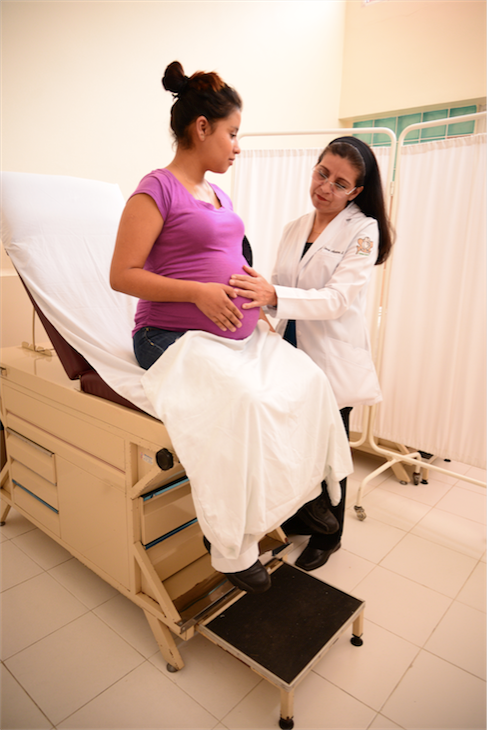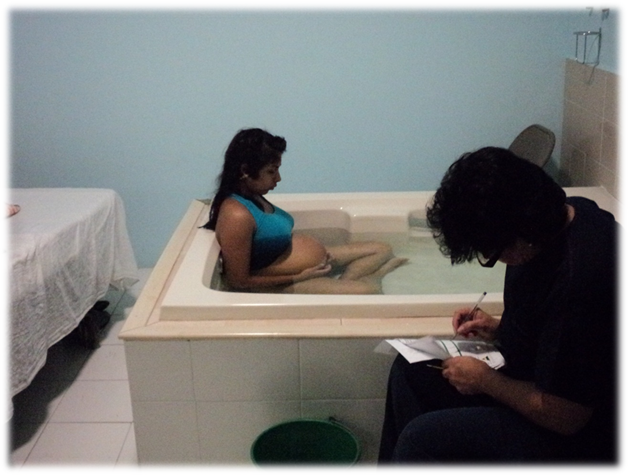The era of the Sustainable Development Goals brings with it ambitious new targets and a clear vision of a healthy world. What we all must remember is the role that midwives and midwifery can play in achieving that vision.
Mexico has long recognized that the overall maternal mortality rate is an indicator of the quality of maternal health services. Yet despite focused efforts, the country fell short of achieving the two-thirds reduction set out in the Millennium Development Goals. A shortage of midwives and insufficient use of trained, skilled midwives was partly responsible, but families also didn’t want to go to a midwife.
Guadalupe Hernández, a professional midwife at CIMIGEN in Mexico City remembers. “In the beginning, it was a big challenge to convince mothers to see a professional midwife, and mortality rates were high,” she said. “People didn’t recognize our role and thought that we were only there to obey a doctor’s orders. We had to work hard to make our role count.”
Training is key. A traditional birth attendant, while an important part of the health system in Mexico and in other parts of the world, doesn’t have the level of training and education of a professional midwife and often can’t cope with the many emergency situations that can arise during pregnancy and childbirth.
Today, we are in a new moment, and midwifery has been officially recognized as an important strategy to address maternal mortality by the Mexican government. In support of this national strategy, the United Nations Population Fund (UNFPA) and Johnson & Johnson Global Community Impact are partnering with four Mexican midwifery schools to improve training for midwives in Mexico to a recognized international standard. The program provides skills-building and works to ensures midwives are supported and championed in their local communities. Beyond the classroom, we are also coordinating recruitment efforts between the midwifery schools and local health institutions to ensure graduates are fully utilized and placed in communities where they are most needed.
The timing couldn’t be more important. Just five years ago, Mexico’s population was 120 million. By 2030, the target date for the SDGs, our population will grow by nearly 20 percent to 143.7 million. Professional midwives can provide capacity and a level of care that ensures a growing population receive the care they need to ensure healthy women and newborns.
 A graduate of the UNFPA and Johnson & Johnson midwifery program, Lucia develops personal pregnancy and delivery plans for each of her patients.
A graduate of the UNFPA and Johnson & Johnson midwifery program, Lucia develops personal pregnancy and delivery plans for each of her patients.
Professional midwives like Guadalupe know what’s possible. “Health systems need a multidisciplinary team,” she says. “We exist – and we can reduce the pressure on the already saturated health system by caring for women with low-risk pregnancies, and referring those who need specialist care to the OBGYN.”
Investing in the training of midwives will have a lasting effect. At last there is a national movement in Mexico to train and to recognize trained midwives for the professionals they are. We are excited to lead the way, so that more women, in Mexico and around the world, can have the healthy experiences they deserve.
By Dr. Javier Domínguez. Dr. Javier Domínguez is the UNFPA National Program officer in Mexico, where he heads the Department of Sexual and Reproductive Health. He has participated in the design and follow up of 60 projects on reproductive health and has implemented numerous technical assistance missions to 19 countries in the areas of family planning, reproductive health commodity security, strategies for maternal mortality reduction, sexual and reproductive health services for adolescents, and quality improvement of reproductive health services.
Featured image: Guadalupe Hernández, a recent graduate of the UNFPA and Johnson & Johnson’s midwifery training program, provides care to a mother in labor.
